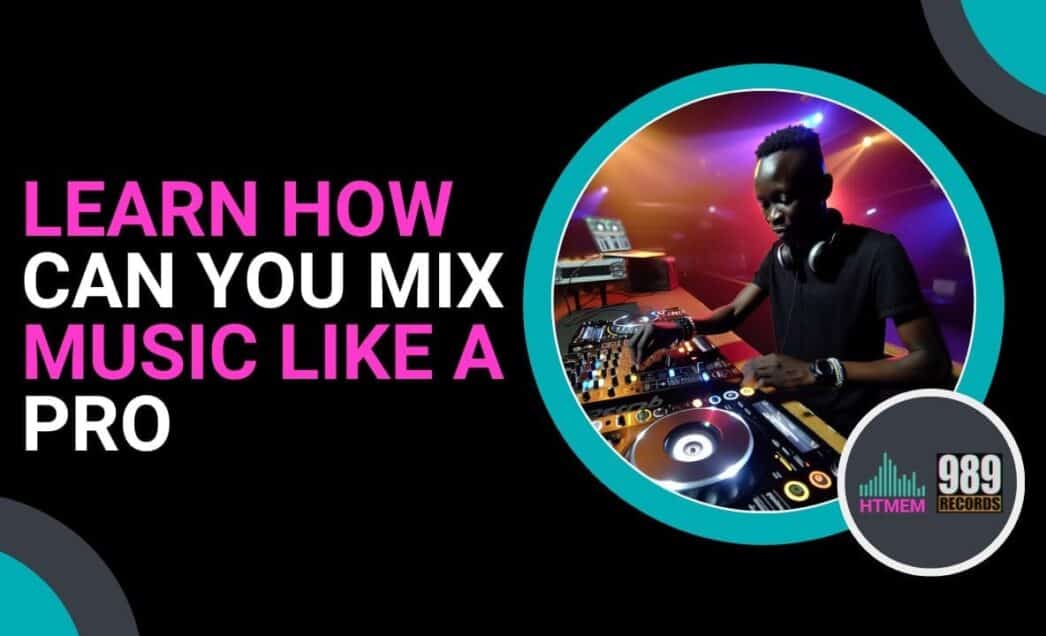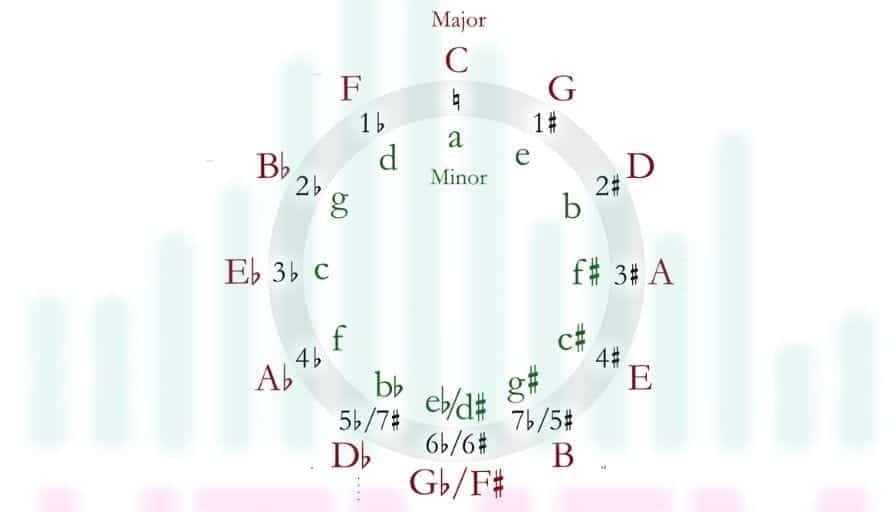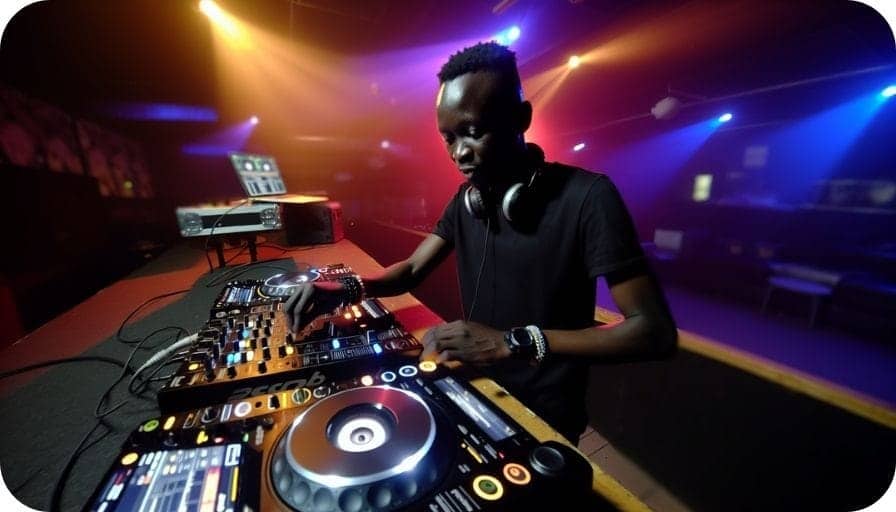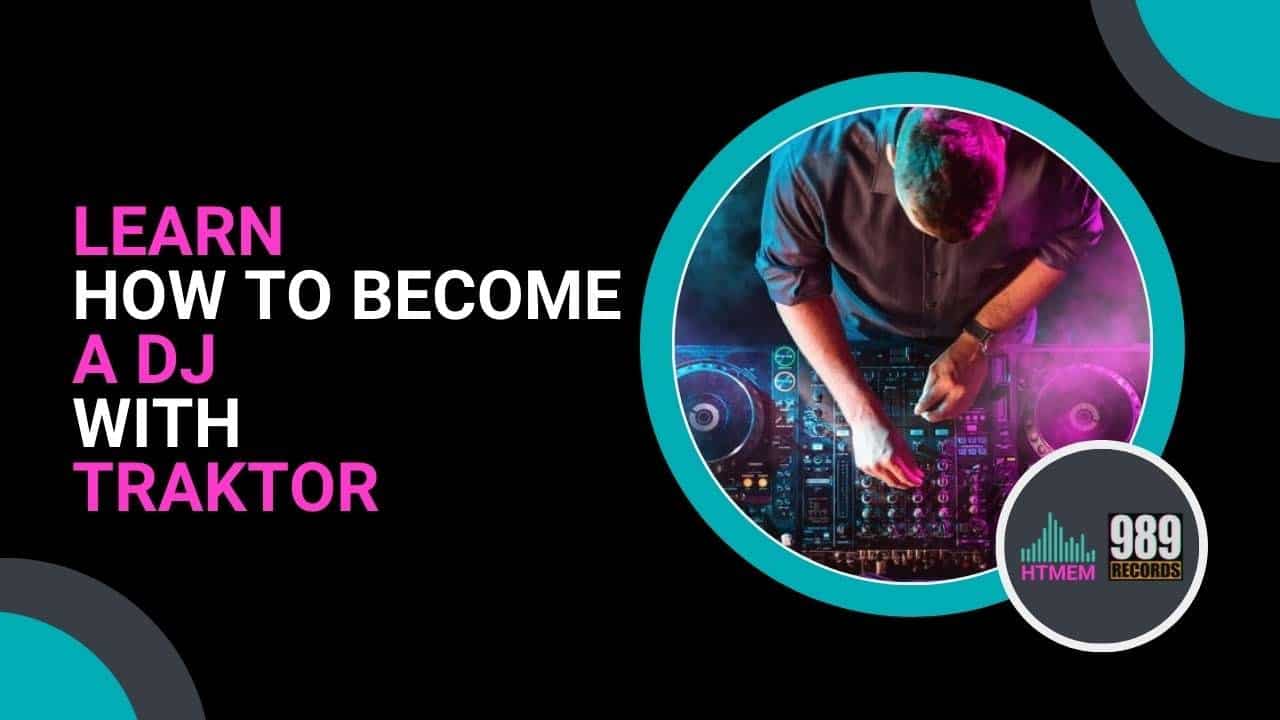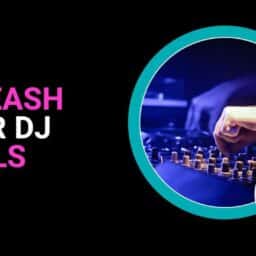Wondering How can you Mix Music to Animate a Dance Floor or Engage your Listeners?
Mixing music is an art. Like any artist, a DJ combines elements with skill and intuition to create something new and captivating. This article delves into fundamental techniques to help you blend tracks with finesse, whether you’re crafting your first mix or looking to refine your live sets.
Prepare to explore beat matching, transitions, effects, and more as we guide you through the key steps to mixing music with confidence.
Key Takeaways
- Utilizing transitions and effects such as EQ adjustments, reverb, filters, and delay can enhance a DJ’s live set. Mastery of these elements along with practicing innovative techniques like cutting or beat-matching is essential for creating dynamic and memorable performances.
- Harmonic mixing is key for DJs to maintain musical flow and captivate audiences, requiring knowledge of music theory and key relationships to avoid clashing melodies and achieve smooth transitions.
- Developing a unique sound and style is crucial for DJs to stand out, involving continuous practice, embracing emerging trends and technologies, and cultivating a diverse music repertoire to reflect one’s tastes.
Table of Contents
Creative Techniques for Blending Tracks
– Understanding a Song Structure
– Harmonic Mixing and Key Matching
– Utilizing Transitions and Effects
Enhancing Your DJ Skills with Mixing
– From Studio to Stage: Applying Mixing Techniques
– Building Your Unique Sound and Style
Summary
FAQ
– Can anyone learn to mix music?
– What do I need to start mixing?
– How hard is it to mix music?
– What app can I use to mix two songs?
Creative Techniques for Blending Tracks
The thrill of being a DJ lies in the liberty to create masterful mixes.
Creating a seamless blend, where audio track elements merge indistinguishably, necessitates immersion into a world of creative techniques. From beat matching, a fundamental skill involving synchronizing the tempo and beat phases of two songs, to understanding phrasing to align transitions with natural music segments, music producers can make songs seamlessly flow together.
One should never underestimate the impact of transitions when mixing multiple songs.
High-impact transitions like backspins and rewinds can dramatically introduce a new beat, contributing to a more dynamic mix. Long fades cater to genres with repetitive elements by overlapping two songs over time, allowing for a gradual mix between them. Quick or instant cuts, known as fast cuts, adeptly transition between songs of varying tempos or punctuate the switch from one track’s buildup to another’s drop.
Innovation and experimentation stand at the forefront of music production. DJs can explore novel mixing techniques by:
- Experimenting with song remixes
- Applying music theory knowledge to better understand the structure of a track
- Creating mashups, which combine the vocal track (acapella) from one song with the instrumental from another, serving as an entryway into the art of track blending
- Learning how to add songs to their repertoire for a more diverse and engaging set
Another key element in mixing music is managing volume levels: noticeable changes in volume can lead to more noticeable transitions, whereas maintaining a consistent volume can result in smoother and more enjoyable transitions.
Yet, ongoing practice allows DJs to refine their skills, fostering the development of a personal and distinctive style via diverse mixing techniques, ultimately creating their own mix.
Learn How to Become a DJ with Traktor
Understanding a Song Structure
Grasping the structure of a track is crucial, as it guides you in determining the optimal points for initiating a mix.
Electronic tracks usually follow a structure that includes an introduction, often featuring only percussive elements (known as the groove), a core theme, a breakdown, a climactic moment or ‘drop’, variations of the main theme, and finally, an outro, which often reverts to a groove without any instruments.
Recognizing these segments not only facilitates well-timed mixes but also aids in identifying strategic locations for setting your hot cues.
Harmonic Mixing and Key Matching
Harmony within a DJ set serves as the magic ingredient captivating the audience. Harmonic mixing ensures that songs played during a mix are incompatible keys.
This helps avoid clashing melodies or chords, resulting in smoother musical transitions. This technique becomes indispensable during live DJ sets, ensuring that transitions between tracks maintain the musical flow and uphold the mix’s harmonic integrity.
While harmonic mixing often focuses on matching keys, it can be utilized creatively to introduce occasional unexpected key changes. These unexpected changes capture the audience’s attention and enhance the DJ set.
Think of it as a plot twist in a gripping novel – an unexpected turn of events that keeps the reader on the edge of their seat.
Furthermore, a harmonically mixed set will resonate more effectively through the sound system, as the congruent harmonies tend to produce less distortion, resulting in clearer and more powerful music output.
So, what’s the path to mastering harmonic mixing?
It starts with the Circle of Fifths by understanding music theory and grasping the relationship between different keys. This knowledge, combined with practice and a keen ear for harmony, can transform a beginner DJ into a pro who can seamlessly mix songs in a live setting.
Utilizing Transitions and Effects
Transitions and effects act as the hues that color the canvas of a DJ set.
They contribute to a dynamic and engaging mix that captures the audience’s attention. Transitions are central to music mixing. By combining innovative sound effects, such as the unconventional use of metal chains or crash cymbals for example, with traditional mixer controls, DJs can creatively switch between two songs while maintaining the flow and the energy
Employing the EQ during transitions is vital to circumvent frequency clashes by controlling elements such as the bass of incoming and outgoing tracks. Filters smooth out transitions with long fades, while reverse sounds can generate anticipation for upcoming sections.
Some techniques to consider for smooth transitions include:
- Using filters
- Incorporating reverse sounds to generate anticipation for upcoming sections
- Experimenting with the reverb effect to introduce elements with a fade-in or fade-out feeling
- Using Loops
Advanced effects like reverb, echo, and chorus, when skillfully applied, augment the DJ’s mix. Techniques such as scratching demonstrate technical proficiency and add an expressive touch.
Effects including:
- Reverbs
- Delays
- Uplifters and Downlifters
- Sub drops
create exciting mixes and artfully construct and relieve tension, engaging the audience, especially in live settings. However, keep in mind that mastering the timing and deployment of build-ups and drops, amplified with effects, provides DJs with a powerful strategy to create impactful and unforgettable experiences within their mixes.
Enhancing Your DJ Skills with Mixing
As DJs transition from novices to professionals, their journey from bedroom sessions to club performances evolves into an extraordinary tale of skill improvement.
DJs can use multi-genre mixing and polyrhythmic techniques to expand their versatility and create unique performances with creative transitions. Practicing with multiple decks can elevate a DJ’s ability to mix complex and layered tracks (up to three songs or even more), requiring advanced skills and dedicated practice.
Smooth transitions in a live DJ set are achieved through the adept use of volume faders, EQ controls, and effects such as reverb, filters, and delay. Altering tempos during a set is a crucial skill for DJs to master to smoothly transition between different genres and modify the dance energy.
Advanced DJ mixing techniques center around devising a dynamic and captivating live set that seizes the audience’s attention through a blend of musical knowledge and technical expertise. Tools like Traktor and Serato Studio offer features like automated Stems and Sample automation which are instrumental for DJs when creating beats and remixes for live performances.
From Studio to Stage: Applying Mixing Techniques
The shift from a studio environment to a live stage marks a substantial stride for a DJ.
It involves not just mastering the art of mixing music, but also adapting to the dynamic environment of a live set. There are a few tools that can assist in this journey. Traktor by Native Instruments, for instance, is well-regarded for its intuitive interface and robust effects chains, catering to the dynamic environment of a live set.
Recording live mixes and critically listening to them later in the form of an audio file helps DJs capture the audience’s experience, providing insights for performance adjustments and improvements. DJs also benefit from using hot cues in their music libraries to swiftly navigate to desired parts of tracks during live sets, aiding in seamless transitions. Additionally, reviewing YouTube videos of their performances can offer valuable visual feedback.
However, achieving success as a DJ extends beyond technical skills. It also encompasses the ability to:
- interpret and adapt to the audience’s reactions
- read the crowd and adjust the music accordingly
- create a unique and engaging performance
- cultivate a distinct style as a DJ
These skills are essential for creating memorable and successful DJ sets.
Building Your Unique Sound and Style
Within the sphere of DJing, your distinct sound and style act as your signatures.
Cultivating a distinct personal style is essential for distinguishing oneself within the DJ community. This can be achieved through blending different genres, creating your own music, and identifying what music personally resonates.
The development of a DJ’s signature sound is a continual process. It involves refining performance sets, publishing mixes, and gaining visibility among promoters. Aspiring DJs should dedicate time to practice extensively, document their mixes, and solicit feedback, all of which are critical steps in creating a unique sound for live shows.
Keeping abreast of industry trends, fresh music releases, and breakthrough technologies is crucial for a DJ to cultivate a sound that is both unique and pertinent to the contemporary music scene. Possessing a broad music collection that spans various genres, time periods, and artistic styles is foundational for creating a unique DJ sound.
Summary
Becoming a master of mixes is a journey of passion, practice, and creativity. It’s about understanding the science behind music, the art of blending tracks, and the magic of captivating an audience.
But most importantly, it’s about finding your unique sound and style. So, are you ready to embark on this journey and mix music like a pro?
Frequently Asked Questions
Can anyone learn to mix music?
Yes, anyone can learn to mix music to a reasonable standard with time and investment, but achieving a professional result may require following a professional course like this.
What do I need to start mixing?
To start mixing music, you’ll need a DJ controller, a mixer, a laptop with DJ software like Traktor, speakers or studio monitors, DJ headphones, and cables. Additionally, you can use a computer with a Digital Audio Workstation (DAW) and audio plug-ins for recording, organizing, and enhancing your tracks.
How hard is it to mix music?
The art of music mixing may initially seem daunting, yet by focusing on essential techniques and maintaining clarity and order in your approach, you can substantially elevate the standard of your DJ sets.
What app can I use to mix two songs?
An easy solution for combining two tracks into a single file is the MP3 Cutter and Audio Merger app, which simplifies the process of editing and merging music files. Traktor stands out as my preferred option for achieving professional-level outcomes.
Suggested Readings
Top 15 DAWs for Free
How to Make Computer Music
Is MP3 Better than WAV?
How to Produce Music Like a Pro
Practice and Enjoy!

